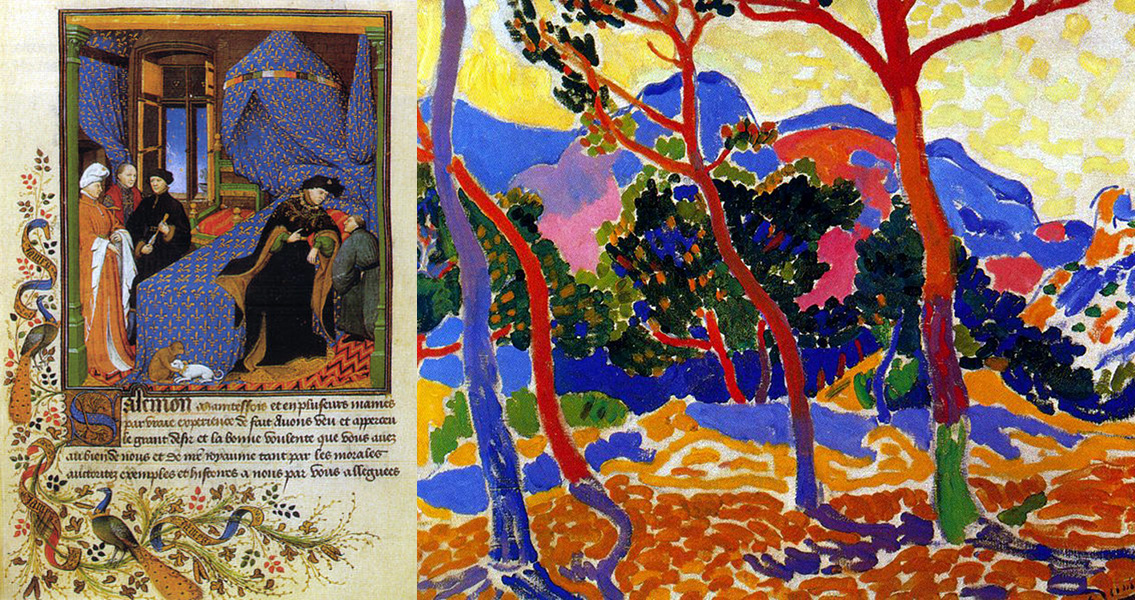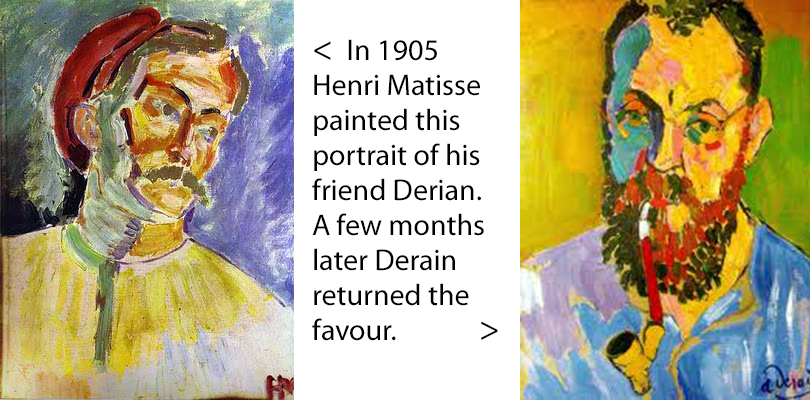Margo comments: I think the colour palette should include a green.
A: Moss green has been added, and the other colours tweaked. However, part of the reason I restricted the palette is to encourage stitchers to think imaginatively . . . in the spirit of mediaeval manuscript illuminators and/or early 20th century impressionist painters.

In the case of the former, permanent colours were restricted to those made from ground up minerals, mostly gold and semi-precious stones. You may have noticed in old tapestries that mainly reds and blues have survived the centuries; yellows and greens tended to be plant-based dyes and not colourfast.
Around 1856 aniline dyes were invented, and that afforded typically cash-strapped artists the opportunity to explore a full range of colours (and to take aspirin for their aches and pains;-). See aniline.
Some painters, including André Derain, whose Trees is shown above, embraced high-key colours with such exuberance that they were called Fauvistes (Wild Beasts). Even though their use of colour and form was vigorously unrepresentational, there is no ambiguity in what they are portraying.

Refer also to the page about blending colours


Michele –
You will given full credit for your work in all documentation. However, since the Torah comes from divine inspiration and belongs to all, we are not signing any portions. Also, not all stitchers have Hebrew (or even English) initials.
Temma